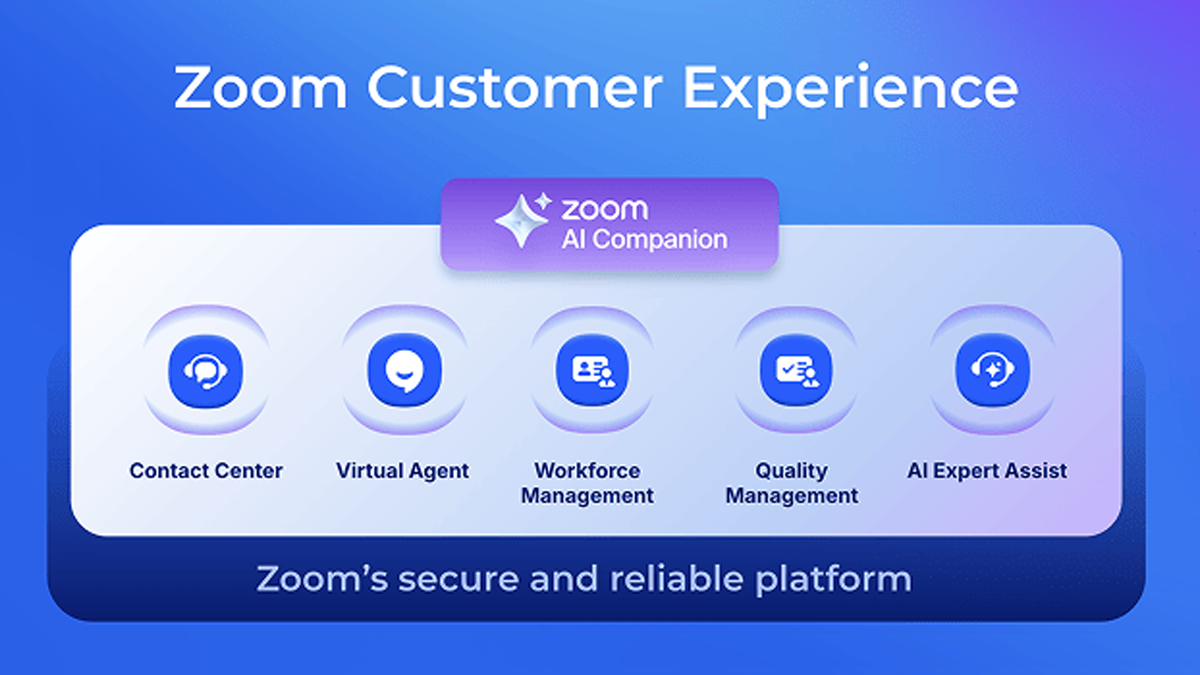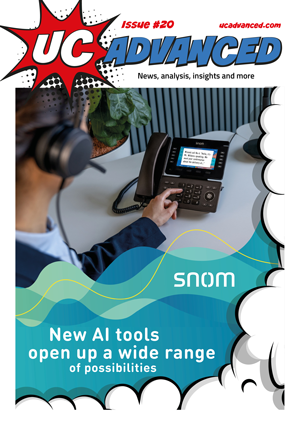A year ago, in UC Advanced #11 magazine, Laura Ball, Zoom’s Virtual Agent Lead, EMEA, gave UC Advanced her thoughts on the current trends in Contact Centres (CCs) and what the future held for them. A year on, we put forward some questions to her. If you’re wondering about the article’s title, you’ll need to go back in time to issue #11.
Q: A year on from our interview in 2024, what’s hot and what’s not ?
Laura Ball: Last year, the focus was on omnichannel experiences and the rise of AI – and this hasn’t changed. As the dust settles on the AI revolution, customers’ expectations are evolving: it’s no longer enough to simply offer multiple channels. The focus is now on delivering seamless, intelligent and consistent experiences across every touchpoint, from SMS to voice and video. It’s no longer just about availability, but about being exceptional at every interaction.
What’s hot and leading this transformation? Agentic AI. We’ve been able to move beyond chatbots into human-guided intelligence, autonomous systems that can reason and act, without human intervention. The rise in virtual agents exemplifies this evolution, enhancing first-contact resolution, driving faster outcomes, and boosting customer satisfaction.
What’s not? Siloed tools are rapidly falling out of favour. Today’s customers demand seamless, real-time service, and businesses need AI-powered insights to deliver them. Platforms that can’t support integrated workflows or AI-driven insights are being replaced by modern, connected solutions.
Q: AI, AI Agents, Agent-2-Agent….where to begin. Is AI making a positive impact in CX ?
LB: Absolutely, AI is having a transformative impact on customer experience and we’re now seeing that impact move from promise to proven outcomes. Today’s AI tools are helping contact centres deliver faster, more focused and peronalised services, by supporting agents with real-time transcription, summarisation, and suggested responses.
Agent-to-agent collaboration is also evolving. Intelligent virtual agents can now hand off conversations to live agents without losing context, eliminating the need for customers to repeat themselves – a longstanding consumer pain point. Meanwhile, AI-enhanced routing ensures customers are directed to the most qualified agent, handing over with the right context to hand, and speeding up resolutions. For agents, AI streamlines their workflows, providing access to actionable insights.
Importantly, AI supports agents, not replaces them. By automating repetitive tasks, AI frees human agents to focus on delivering the empathy and understanding that customers want. The result? Higher customer satisfaction and better agent morale. AI is no longer just a tool but a true partner in delivering seamless, autonomous and scalable CX.
Q: So much discussion has been generated on data sovereignty and data security. What’s your opinion ?
LB: As AI becomes more central to customer interactions, data privacy, sovereignty and ethical AI use are under the spotlight. There’s growing pressure, particularly across Europe and other tightly regulated markets, for companies to ensure that innovation doesn’t come at an expense.
To meet evolving expectations, providers need to introduce safeguards that enhance trust, transparency and control. Offering organisations the ability to choose where their data is storied supports growing demands for data sovereignty and regulatory compliance. These measures are designed to give businesses greater autonomy and assurance over how sensitive data is handled, processed, and stored.
With regulatory pressure increasing in many markets, particularly in Europe, these safeguards are essential. The future of CX will be built not just on smart experiences, but secure and ethical ones.
Q: Personalised digital experiences – what progress have we made?
LB: The past year has brought significant progress in personalisation, shifting from generic interactions to adaptive customer experiences. Zoom Contact Centre now integrates with customer relationship management systems to give agents real-time access to customer histories and preferences. This helps them deliver faster, more tailored responses.
AI tools now provide live sentiment analysis and suggested actions, helping agents adjust their tone and approach mid-conversation. This empowers agents to deliver faster, more relevant, and more human responses, improving both customer satisfaction and efficiency. This then translates directly into stronger loyalty and better outcomes.
Inclusivity is another important dimension of personalisation. Businesses can now connect with more customers in their preferred language – with tools like built-in transcription, translation and multilingual support – making services more accessible to all.
Q: Anything new that CC’s are implementing to improve CX?
LB: Several new developments are helping contact centres improve service delivery. One notable development is the integration of tools and communication channels into a single, unified interface. By bringing everything together in real time, this approach streamlines workflows, reduces complexity, and enables agents to respond more quickly and effectively.
Real-time, AI-powered dashboards are also gaining momentum. These tools provide real-time insights into call trends, customer feedback, and agent performance. This enables managers to make more informed decisions in the moment rather than relying on retrospective reports.
The rise of agentic AI in virtual agents is also significantly improving CC. These next generation agents autonomously complete tasks like processing returns or booking appointments, using advanced reasoning and context-aware conversations. This level of autonomy significantly increases self-service containment and frees up human agents for more complex or emotionally sensitive interactions.
Internal collaboration is also improving and boosting human agent efficiency. Contact centres are now able to integrate communication tools like phone and team chat directly into agent workflows. This makes it easier to loop in experts or escalate cases quickly, reducing delays and improving first-contact resolution.
Q: Is investment and ROI in CC’s still proving true (i.e. still a worthwhile investment) ?
LB: Yes, investment in modern contact centres continues to deliver strong results, particularly investment in technologies such as virtual agents. This is something we have experienced first-hand at Zoom, where our own virtual agent helps us to save $13 million every single month. Not only that, it helps our customer support teams achieve a CSAT score of 95%.
Organisations that deploy generative and agentic AI technologies such as virtual agents are seeing measurable improvements in efficiency, resolution times and customer satisfaction. Virtual agents can now handle a growing share of customer inquiries autonomously, reducing the need for human intervention, while maintaining service quality.
The return of these investments goes beyond operational cost savings. Businesses are reporting higher CSAT and ESAT scores, improved first-contact resolution and greater customer loyalty. This helps move customers from being frustrated to building true connections with brands, delivering exceptional customer service and driving results for businesses.
Website readers, wishing to review the magazine this article first appeared in, can click here.












